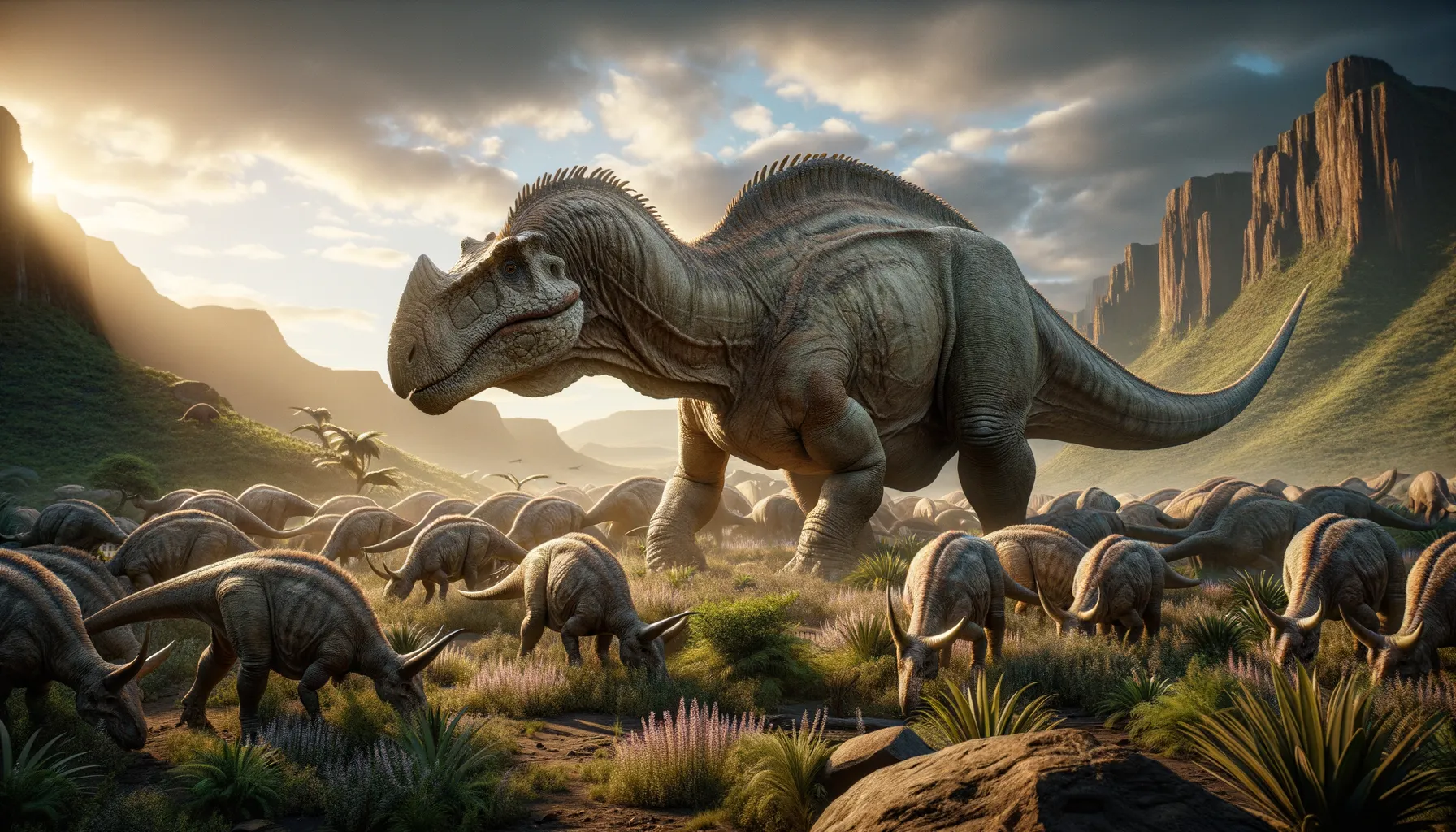
Basutodon
Roaming the ancient plains in herds.
Period
Jurassic
Length
About 7 meters long from head to tail.
Height
Approximately 3 meters tall at the hip.
Weight
Estimated to be around 1,200 kilograms.
Basutodon was a herbivorous dinosaur that roamed the ancient landscapes during the Jurassic period. With its large build, it likely fed on vegetation and lived in herds for protection. Fossil evidence suggests that it inhabited what is now Southern Africa, leaving behind clues of its existence in the region's rocky outcrops. Its discovery has shed light on the diversity of dinosaurs that once thrived on the Gondwanan continent.
Diet
Basutodon primarily fed on plants, utilizing its strong teeth to break down tough vegetation. Its diet likely consisted of ferns, cycads, and other Jurassic flora that were abundant during its time.
Hunting
As a herbivore, it did not hunt other animals but rather foraged for plant material throughout the year. Its social herding could have provided safety from predators.
Environmental challenges
Living during the Jurassic meant facing a range of challenges from climatic changes to volcanic activities. These dinosaurs had to adapt to fluctuating temperatures and periods of drought. Their herding behavior helped them find enough food and water, although competition was fierce among different herbivore species.
Speed
Average speed likely similar to other large herbivores.
Lifespan
Estimated between 20 to 30 years.
First discovery
Fossil remains discovered in the late 19th century.
Fun Facts
- Basutodon is known from only a single tooth, which makes it a mysterious and intriguing dinosaur.
- The name Basutodon means 'Basuto tooth,' named after the Basutoland where the tooth was discovered, now known as Lesotho.
- It was originally thought to belong to a meat-eating dinosaur due to the shape of the tooth.
- Basutodon lived during the early Jurassic period, around 200 million years ago.
- Although much about Basutodon is unknown, it contributes to our understanding of early dinosaur diversity in Africa.
- Paleontologists believe Basutodon was a small to medium-sized dinosaur, based on the size of the fossilized tooth.
- The discovery of Basutodon highlights how even a single fossil can offer glimpses into prehistoric life.
Growth and Development
Basutodon would have grown steadily from hatching to adulthood, reaching full size over several years. Juveniles likely remained close to the herd for protection. Growth was influenced by environmental factors and availability of food resources.
Habitat
This dinosaur thrived in open plains and forested environments, which provided ample food and protection. The mix of dry and wet seasons in its habitat required adaptability for survival. Access to water sources was crucial, especially during dry periods.
Interaction with other species
Basutodon coexisted with numerous other dinosaur species, including potential predators. It may have shared its habitat with various herbivores, possibly competing for the same food resources. Relationships with predators would have influenced its social and defensive behaviors.
Natural lifespan
Basutodon's natural lifespan was likely around 25 years.
Reproduction
Reproductive strategies would have included laying eggs in nests, potentially in communal nesting sites. Parental care is uncertain, but young dinosaurs likely stayed with adults for protection. Eggshells and nest sites offer clues about these behaviors.
Social behaviour
This dinosaur likely exhibited herd behavior for protection and efficient foraging. These herd structures could have included complex social dynamics, possibly with dominant individuals leading groups. Social interactions would have played a key role in the survival of its members.
Fossil locations
Fossils attributed to Basutodon have been primarily found in southern parts of Africa. These fossil sites offer critical insights into the distribution of dinosaurs on the continent during the Jurassic. Much of the information comes from sediment layers known to be from the period.
